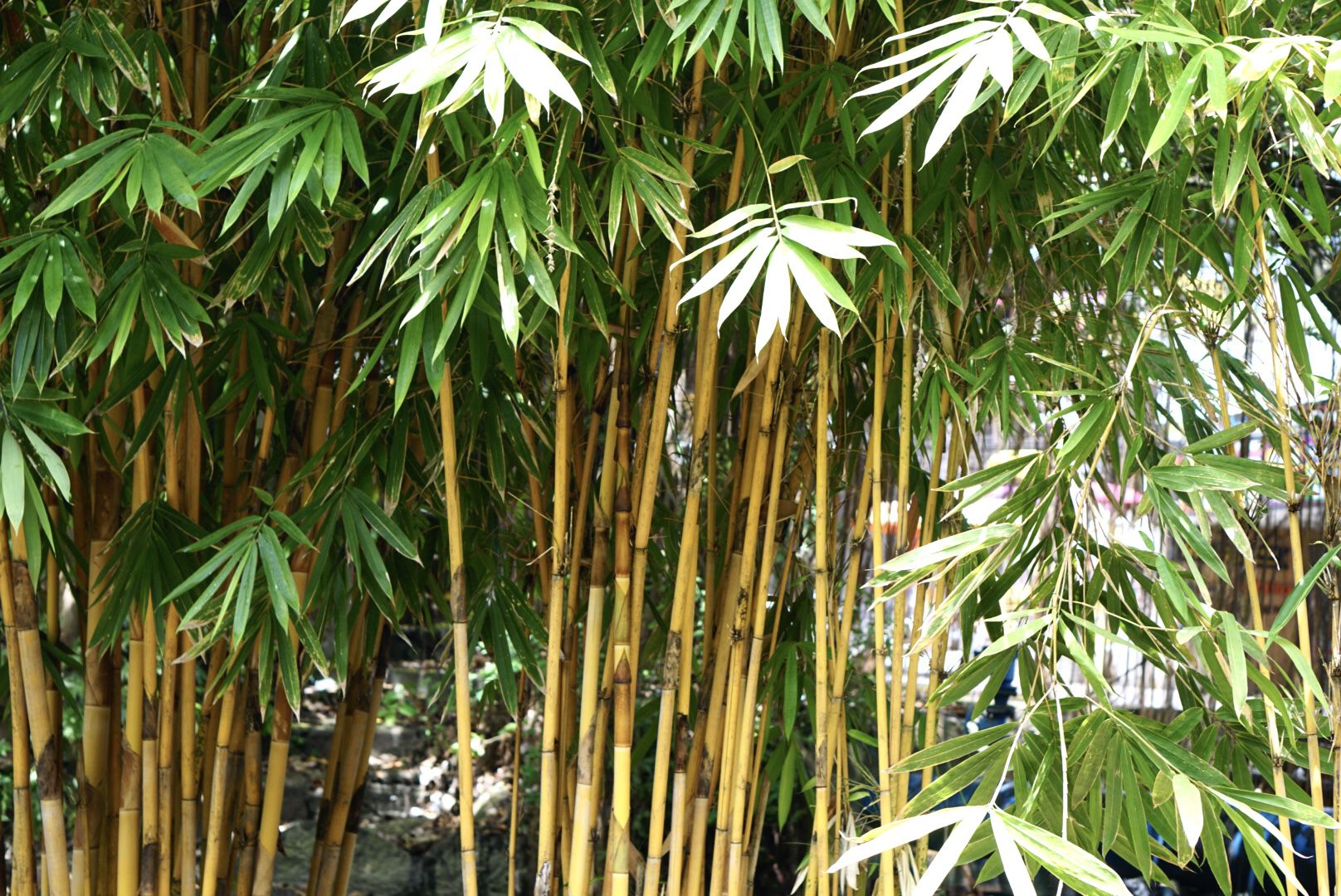
Golden Bamboo is a member of the grass family with hollow greenish-yellow canes. Its stems are flattened and grooved in cross section, and its leaves have a network pattern of veins (unlike Bambusa species, which have a round, grooveless stem cross-section, and parallel veins on their leaf blades). They create an impenetrable network of roots, heavy leaf litter and dense shade.
Family: Poaceae
Origin: Golden Bamboo is native to China. Wild plants still exist in the Zhejiang and Fujian Provinces and are cultivated in the Yangtze River Valley.
Habit: A large perennial growing to 8 m tall. It has branched, woody stems that are 20–30 mm in diameter and which turn yellowish or greyish with age. The plants have a running underground stem (or rhizome) from which buds and roots are produced.
Leaves: Stem leaves have deciduous sheaths 12–18 cm long, yellow or green, with white hairs at the base. The the membranous structure between the leaf sheath and the leaf blade, is 1–2 mm long and hairy. Stem leaf blades are lance-shaped, reflexed, 3-6 cm long, flat or wrinkled and deciduous. Foliage leaf sheaths are hairy on the margin. Foliage leaf blades are lance-shaped or oblong, flat, 4-15 cm long, 5-23 mm wide, and joined to the leaf sheaths by short stalks.
Flowers: Flowers at intervals of 15–30 years or more. The flower head is comprised of branches of stalked spikelets on an elongate central axis. Each spikelet is surrounded by bracts (modified leaves) usually bearing a small blade at the apex. The spikelets have 2 florets (small flowers) and only the lower one is fertile.
Roots: The plants have a running underground stem (or rhizome) from which buds and roots are produced.
Dispersal: It can produce erect shoots from the entire length of its rhizomes (underground stems), resulting in many loosely clumped shoots over large areas. It can be spread through rhizome fragments in dumped garden waste.
More Information: NSW WeedWise profile
